Preparing for your hiking trip by performing workouts for hiking is vital to its success and enjoyment, allowing you to blaze a hot trail longer, farther and faster (possibly to completion). This means your muscles and cardio need to be in the optimum condition before going on your trip. Not taking the time to exercise beforehand, can make your hiking trip short and unpleasant, since you can easily run into problems such as injuries or fatigue.
Hiking is an activity that people from all over the world enjoy every day. It is a workout on its own, too, and has been known to do wonders like work the muscles in the hips, lower legs and lower back; strengthen the core; relieve stress; enhance your mood; burn calories; Improve blood pressure, blood sugar and balance and minimize the chance of suffering from heart disease.
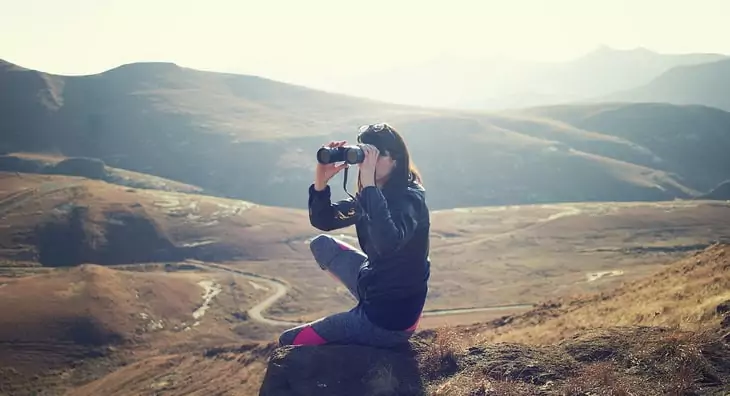
But to fully enjoy these benefits, you need to be in good shape. Read on as we discuss eleven of the best exercises you should do to get in shape for hiking. But before we get to them, we shall further elaborate on why you need to be in shape and which muscles you must focus on when performing your exercises for hiking.
Why you need to be in shape before going on a hike
You get some added strength when you work your hiking muscles. This is beneficial because, with added strength, you get a little more freedom to do more during your trip without worrying that you’re risking injury. This gives you peace of mind, since you know your muscles can take most of whatever the hiking trail can throw at them.
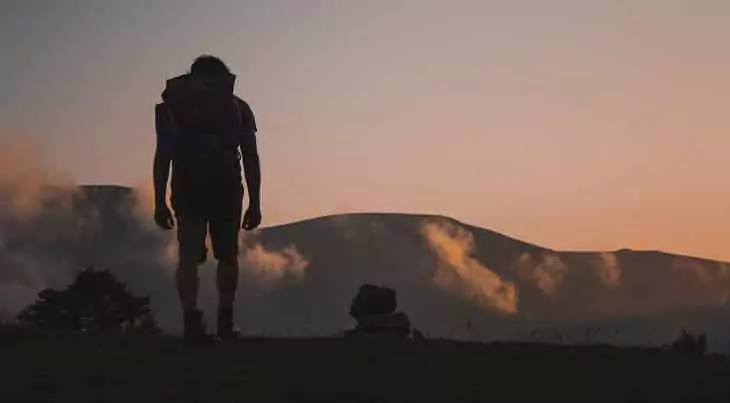
Another additional benefit of the added strength is that your reaction and recovery time is improved in the process. This means that when you run into unfavorable terrain, your muscles will quickly adapt and you will be able to quickly get up and go to safety if you happen to injure yourself. What’s more, extending the exercise to cover your lower back ensures that your back muscles are ready to handle any heavy loads if you decide to throw in some backpacking into the mix, preventing the backpack from weighing and slowing you down.
If you don’t work your hiking and backpacking muscles beforehand, you will definitely work them during the hiking trip. If your muscles aren’t prepped for this, they can start to hurt, leading to soreness due to the fact that their strength and endurance isn’t up to mark. On top of the pain, you won’t be able to hike longer, farther and faster because you might get tired very quickly, run out of breath or need to take a lot of brakes. See our article on the best ankle strengthening exercises to help you build resistance for your hikes.
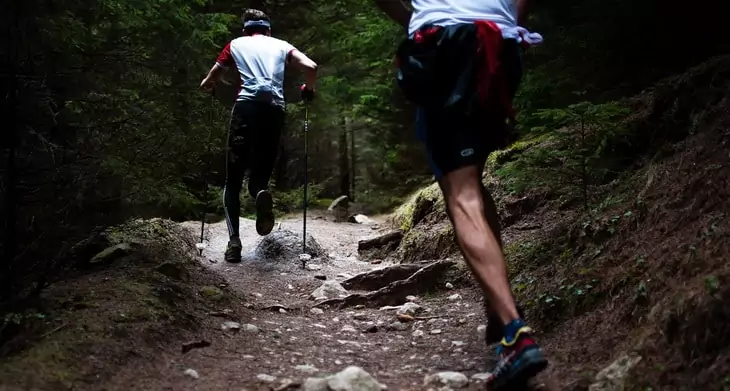
So making sure that you are in shape is vital, but you can’t do this if you don’t know what muscle to work out in the first place. The next section will elaborate on this.
Hiking muscles you need to work out
When hiking you will definitely need the following muscles to be in shape for the trip: glutes, quads, calves, abdominal muscles, hip muscles and hamstrings. All these muscles play vital roles when performing various activities during your hiking trip, and are working really good, especially when going uphill. They make you more effective while hiking and make it an enjoyable experience if they are conditioned for it.
Glutes
The glutes are simply the muscles that are found in your butt. They are one of the primary muscles that are engaged the most throughout your entire hiking trip and need attention to make them ready to do their job. They make sure that your torso is well-supported, especially when you carrying a backpack or going uphill.

Quads
Quads are also known as the thighs in layman terms. Together with the glutes, they are also the primary muscles that are constantly engaged during hiking, responsible for keeping your knees straight and maintaining forward momentum as you hike along the trail.

Calves
These muscles, which are located at the back of your lower legs, are needed most when you run into tricky terrain on your hiking trail or when going uphill while carrying a loaded backpack. While hiking, they are constantly engaged and adapt when the demands of the terrain change.
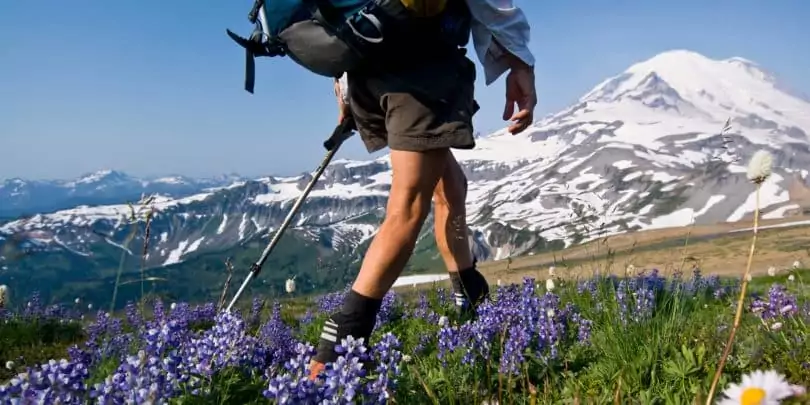
Hamstrings
Hamstrings are located at the back of your upper thigh and contribute to the flexibility of your knee. Compared to other activities, like running, hiking gives the hamstrings a much more intense workout. They also work together with the quads to keep you moving forward.
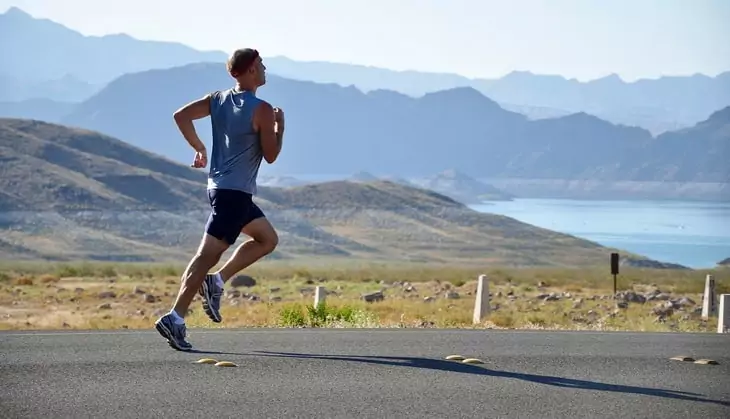
Abdominal Muscles
These are excellent for providing support. They are responsible for keeping the back straight as you climb uphill by preventing your back from turning, bending and twisting. This means these muscles are vital when hiking because they help prevent a host of potential back problems.
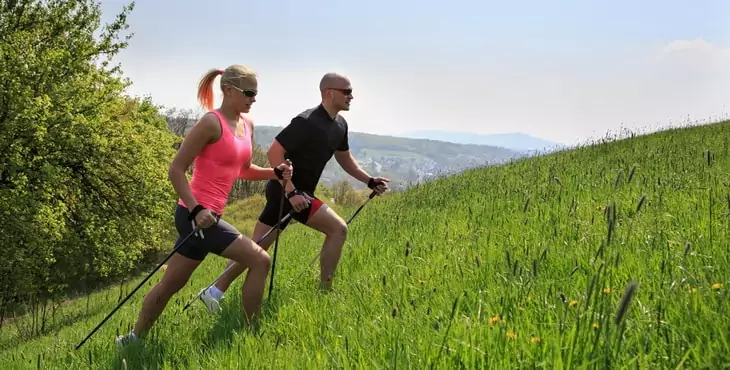
Hip Muscles
When performing various physical activities, your hip muscles should be loosened up and flexible enough so you can perform the activities effectively. This is especially true for hiking, since you need the hip muscles (flexors, abductors and adductors) reduce better shock absorption, reducing the risk of strain and supporting the glutes and lower back.
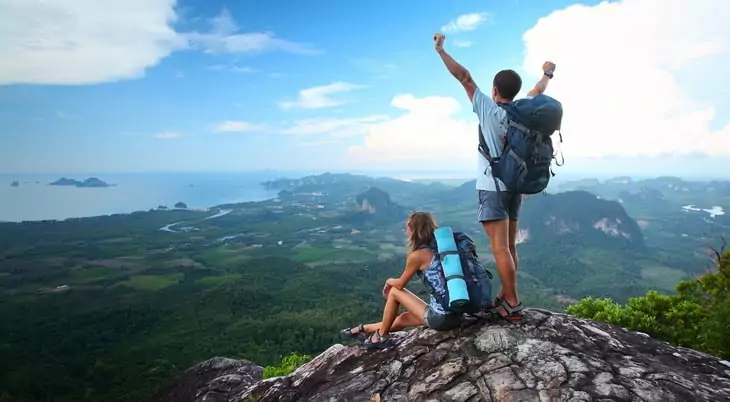
Don’t forget to add is some cardio for better endurance
Working the muscles is great, but one other thing that should not be ignored when it comes to improving your getting in shape for hiking is working in some cardio into your exercises. You need to also prepare your cardiovascular system because you don’t want your lungs to start burning in the middle of your trip because they weren’t prepared for long distances.
One thing to never forget when getting in shape for hiking, like mentioned earlier, is that hiking is its own exercise. This means that one the best ways to get in shape for hiking is, well, hiking. You can’t possibly hope to simulate all the conditions and terrain you can run into while hiking in a home environment or gym.
So it is better to get out there and start hiking your way up to much harder trails, which will increase your fitness in the process for hiking longer, farther and faster. With that bit of useful information out of the way, we have compiled the following list for you to show you how to get in shape for hiking at home or at the gym:
Lunges
Lunges are a good hiking workout that you can do almost anywhere. They are good for toning the legs to help you through those tough trails and uphill climbs. If done right, you can reduce any soreness that can affect the muscles and joints. The results of lunges are observable and can be enjoyed in a short amount of time.
To perform them, Stand and face forward (it helps if you are actually staring at something), remembering to keep your chin and back straight to properly engage your core. From this position, take a single step forward with your right leg while bending your left leg until both knees are at a 90-degree angle. Make sure that the left knee is not touching the ground. Return to the standing position, switch feet and repeat. To make it more intense, do the lunges, while holding some dumbbells in both hands.
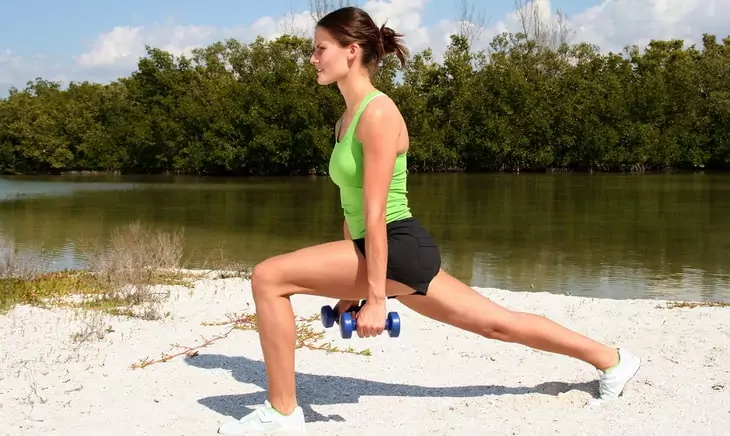
Poor man’s Leg Curl
The poor man’s leg curl is an exercise that is good for the hamstrings and the glutes and very easy to perform. To do one rep, lie down on the floor close to an elevated bench and put your left leg, lifted as high as you can, on the bench with your knees bent. Using the left leg’s hamstrings and glutes push down on the bench in order to lift your butt off the floor. Your hips also need to be fully extended by the time your butt is lifted to perform the rep perfectly.
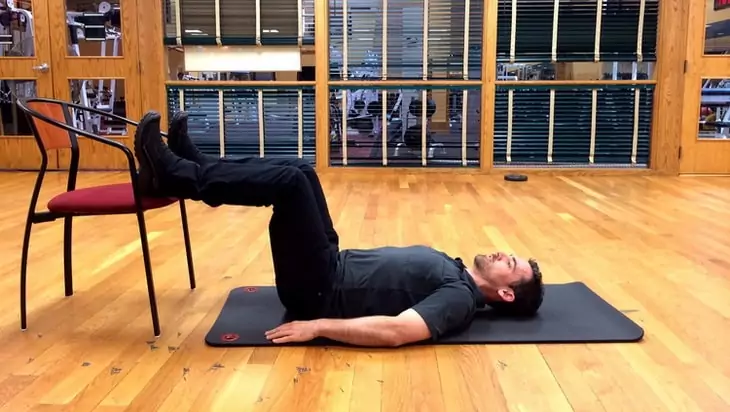
Standing Calf stretches
With flexible calves, you will be able to avoid injury in tricky terrain and go through it much faster, making calf stretches an essential exercise for any hiker. Like all stretching exercises, they make sure that the targeted muscles or joints limber up and are ready for action. You can also do them anywhere, as long as there is a wall to lean on.
Begin by standing about three feet from the wall with your right leg in front, making sure your foot is laid flat on the floor. Lean into the wall, then extend the left leg backwards until it is straight while also bending the right leg. The right heel needs to be flat on the floor. Hold this position for 30 to 60 seconds – feeling the stretch – before switching feet and repeating the sequence.
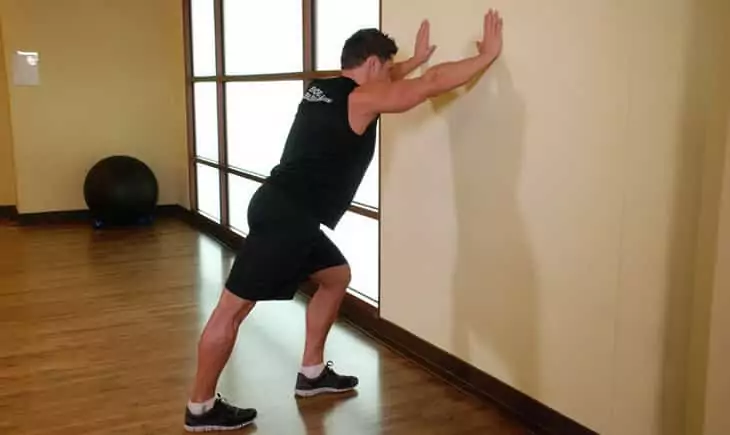
Figure-4 stretch
This exercise is good for your hip muscles, making them limber enough be able to perform adequate hip rotation for greater flexibility and shock absorption. To do the figure-4 stretch, lie down on the floor with your back and bend your right knee.
Bring your right foot closer to the thigh; this will stretch and limber up the necessary muscles in the hip, especially the Piriformis (the muscles located behind the glutes). Switch feet and bring your left foot closer to the right knee instead. To make the stretches more intense you can use your hands to bring the leg you are stretching even closer to the knee.
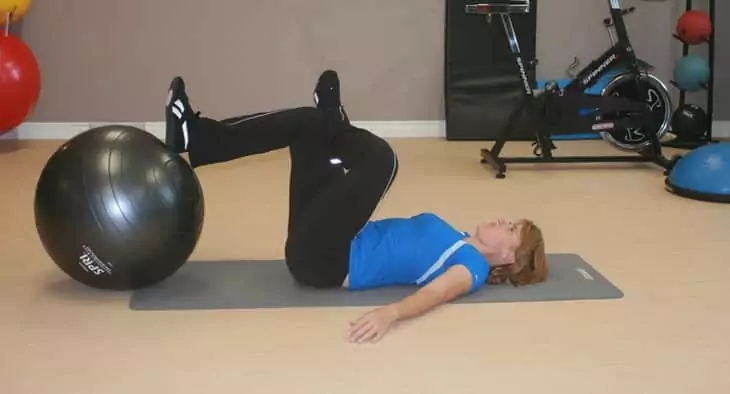
Squats
Squats give your legs that much needed strength for avoiding injury and being able to support some heavy loads on your back. They are truly a great workout, targeting the knees, hamstrings, quadriceps, hips and glutes all at once. They are also a great way to tone your legs, giving you the added benefit of giving them a nice aesthetic appeal. While doing the squats, you can make them more challenging by holding a weight and resting it on your shoulders.
Start in a standing position, with both feet placed apart at shoulder width. Then lower your back, while keeping it straight, then bend your knees as much as you can and extend your arms forward to maintain balance while shifting your weight to the heels. Also, make sure that your lower body is parallel to the ground. Now, hold that position for a bit, return to the starting position and repeat.
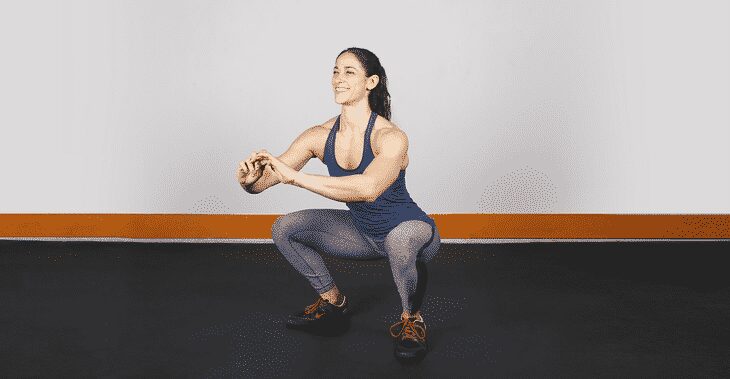
Sit ups
Sit ups target the abdominal muscles (the abs), making them stronger and able to support your body during hiking. They are also a pretty basic exercise, but they are effective and can give you a six pack or flatter tummy.
To do a single sit up, start by lying with your back against the floor and your knees bent, with feet placed flat on the ground. While in this position, some people place their hands behind their head or cross them while placing their hands on their shoulders. After getting into position, sit up, hold that position for a little bit, and then lay back down slowly on the floor.
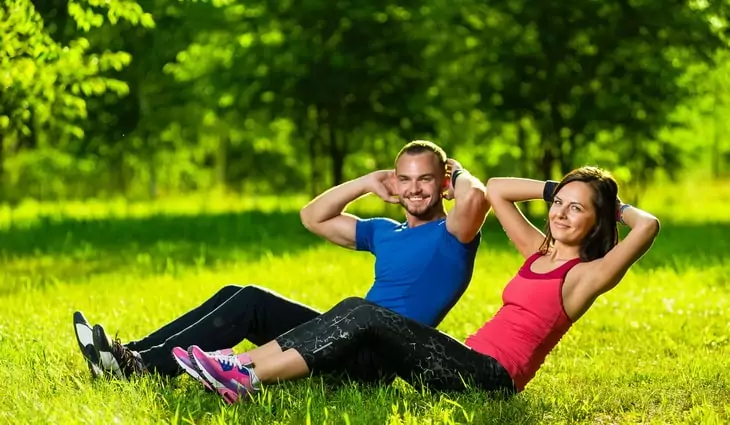
Crunches
Crunches are done specifically to increase your back strength if you are going to be placing some weight on it. They go well with sit ups by targeting your lower back, abdominal muscles and stabilizing your core. Crunches give muscles you never even knew you had are much needed workout.
To perform a crunch, start by lying on the floor with your back flat and your knees bent. Like a sit up, you can either cross your hands or place them behind your head. Using your abdominal muscles, sit up slightly (your shoulders should face the ceiling), pause for a bit, and then lower yourself back slowly. That is how you do a crunch.

Band walks
Band walks target the glutes and hips, making them adept at stabilizing your core and supporting your back when carrying a heavy load. In order to do this exercise you will need a mini resistance band to provide some tension while you stand.
To begin, wrap the mini resistance band around your legs. Do a quarter squat, bending your knees half way instead of fully like you do in a squat, while placing your feet apart at hip width to make the resistance band provide enough tension. Now, walk forward to perform the band walks.
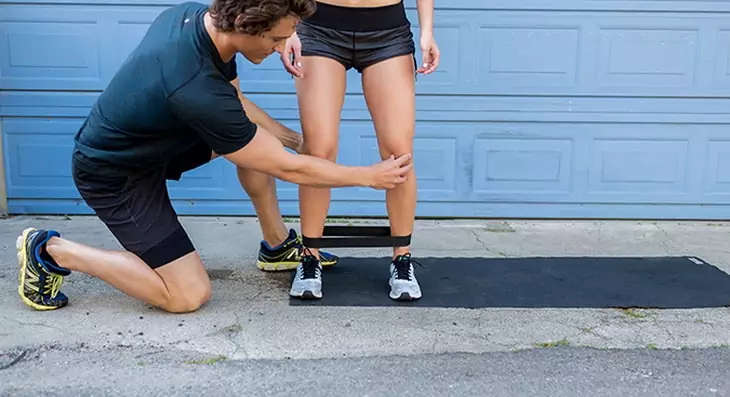
Chair walks
Chair walks are excellent for strengthening your hamstrings so that they don’t get strained easily while enjoying your hike. This is especially true if you are going to be carrying a heavy backpack while walking on soft surfaces, which can make your hamstrings tense. They also work the glutes as well.
Sit on the front half of a rolling chair or stool, making sure that your spine is as straight as possible. Now, pull yourself forward using your hamstrings over a distance of 75 feet. Make sure not to lean forward when trying to pull yourself forward. When you reach 75 feet, turn the chair around and pull yourself back to your original position. Do this at least three times to get a good workout.
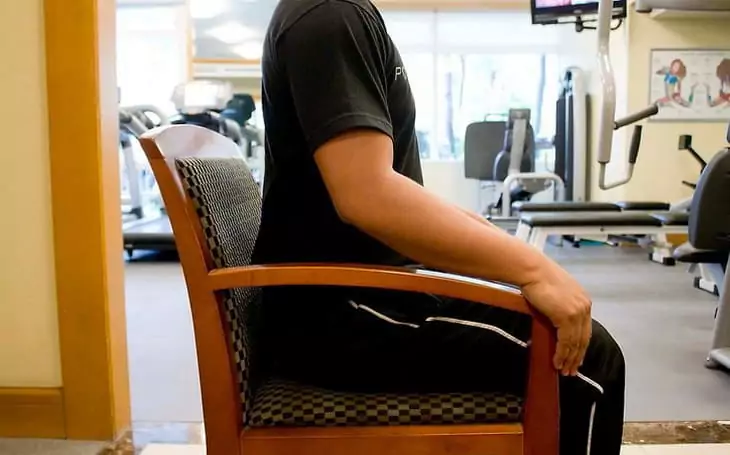
Walking
For you to be able to go longer and farther without losing breath or taking a lot of breaks, you can do mini hikes in the form of walks. For 30 to 45 minutes every other day, you can take a walk in order to give yourself that much needed aerobic conditioning. When doing it the fourth time you can challenge yourself by walking uphill or in tricky terrain or by increasing the distance you normally cover until you can cover longer distances without breaking too much of a sweat or feeling your lungs complain. A previous piece on hiking workouts to build excellent resistance is a great article for you to read.
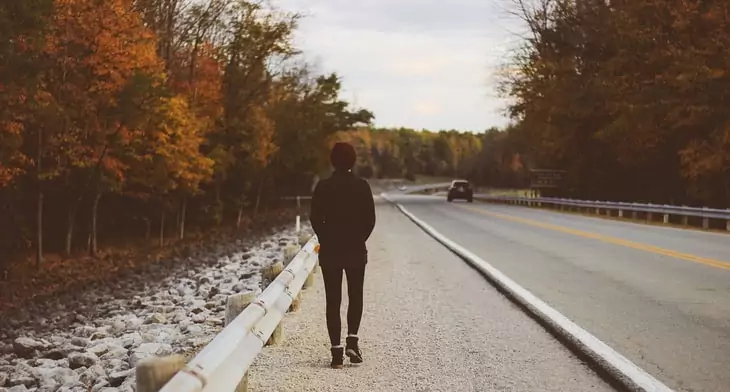
Uphill running
Building your cardio with normal running is great, but you won’t always meet a flat surface when hiking and it’s better to train yourself by taking on the actual terrain you will run into, especially when blazing a trail. Running up a hill every other day will condition your lungs and strengthen your legs for uphill climbs so that you keep going. Make sure you read our reviews of the top heart rate monitor to gauge your performance better.
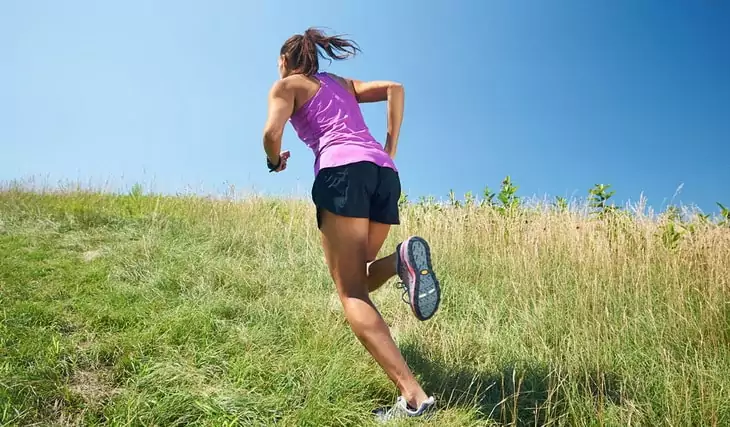
Wrapping it up
We have given you eleven of the best hiking workouts to get you ready for your next hiking adventure, targeting various muscles, especially in the legs, and preparing your cardiovascular system. Through our educated opinion, these exercises will get you in the shape you need to get through your hiking trip and actually enjoy it instead of worrying if you will make it to the end. The article has also explained the importance getting in shape and elaborated on the exact muscles that you need to focus on.
Before you embark on your next hiking trip, read our article reviews of the best brands of hiking shoes. It will help you tremendously.
If you would like to leave us your feedback, then feel free; we are always delighted to hear from our valued readers. We would like to know which exercise has benefited you the most on your hiking trips from the list we have provided and if we have missed any exercise you think needs to be mentioned.
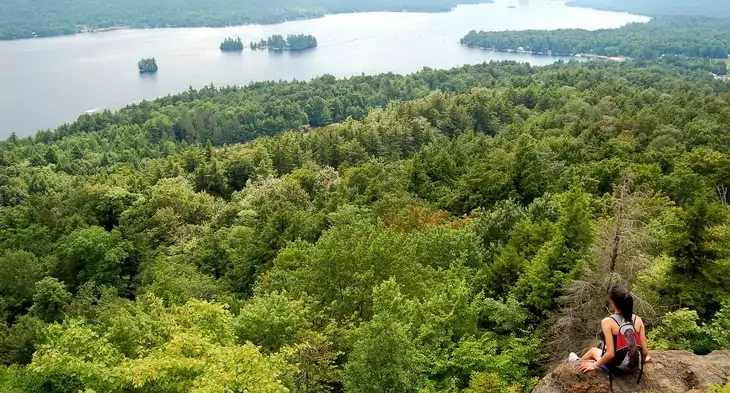
Otherwise, please share the article with fellow hikers or would-be hikers on social media so they know the importance of getting in shape and how to do it.


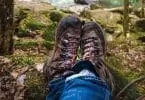





I’m going to do this now to increase my endurance for hiking. Any way to do this for my young ones who can’t last long too?
Try doing shorter sets or less reps when it comes to your kids. If you don’t think they have gotten enough exercise, have them play games outside when you are done hiking for the day.
This is really appreciated. I just read whole article and I am really happy with it. Do you have a schedule for these workout?
Each person’s schedule is different. Just do these when you can on the trail.